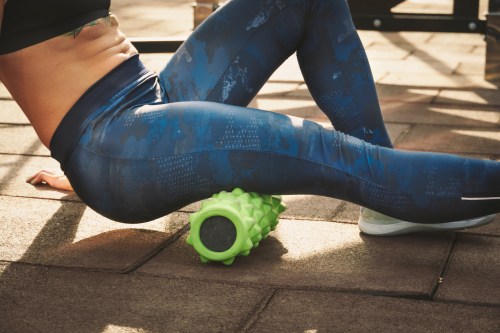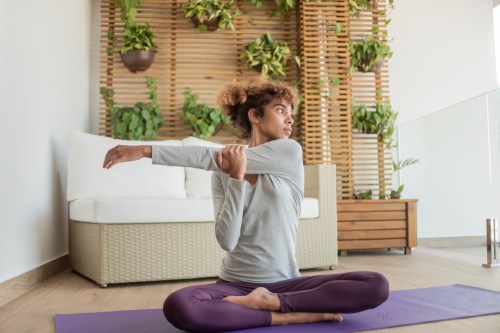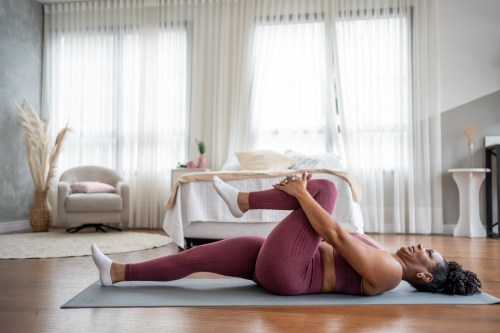Here’s how to foam roll all of the muscles that get tight from sedentary behavior
A physical therapist explains how to foam roll for lower back pain, which actually doesn't involve rolling your back at all. Here's what to know.

It’s easy to let high-impact workouts and sports to take the blame for muscle pain and soreness. While these activities can definitely be culprits, don’t forget that sitting all day long can lead to just as many aches and pains. One of the major hotspots for these aches is your (drumroll please) back, which is why a physical therapist is sharing tips on just how to foam roll for lower back pain.
If you’re one of the many experiencing extra pain in the back as you work from home, note that your lower back itself might not be the actual spot to target when you’re fighting tightness. “Whenever patients ask me for rules to follow on fixing back pain, I usually tell them that the first thing you want to work on is the pelvis,” says Vinh Pham, physical therapist and co-founder of Myodetox Clinics. “The pelvis is the foundation upon which the spine sits. Anything that tilts the pelvis will in turn tilt the spine out of alignment.”
The problem is that your pelvis isn’t exactly something you can foam roll. “One area that people assume is the lower back is really one of our hip flexors called the psoas muscles,” echoes Rand Mclain, DO, osteopath and chief medical officer of LCR Health. “You cannot roll out the psoas muscles, though.” What you can do, however, is foam roll the four muscles that connect to the pelvis, says Pham.
The muscles in question are your hamstrings, quadriceps, glutes, and abdominal muscles. “The hamstrings when tight will pull your pelvis into a posterior tilt and cause a lock-up at your lower back, which leads to lower back stiffness,” says Pham. “When the quads are tight, they’ll pull your pelvis into an anterior tilt and cause a lock-up at the lower back, which will do the same thing.” He goes on to explain that tight glutes will not only rotate your pelvis, but also contribute to tight hips, which lead to a domino effect of lower back pain since it’ll start compensating for “no movement happening at the hips.” Your abs connect to your pelvis at your ribcage, and if that area cannot move well, “your spine cannot move well, which equates to lower back tightness and pain,” says Pham. A-ha.
“Foam roll these four muscles after a long day of sitting, as it will balance out your pelvis which in turn will make your spine very happy,” he says. Keep scrolling for Pham’s tips for foam rolling these areas.
How to foam roll for lower back pain
1. Go slowly: “Make sure to do both sides and go slow,” says Pham. “Roll out for 30 seconds to a minute per segment.”
2. Use a vibrating foam roller if you can: While any foam roller will do the job, Pham prefers to use a vibrating one. “The vibrating feature allows me to ease into the tissue easier, and I don’t have to move as much when rolling to get the same release,” he says.
3. Aim to do this daily: Pham and Dr. Mclain both agree that you can foam roll these areas every single day, if you wanted to. At a minimum, though, shoot for every other day.
You can also add in this 15-minute stretch and recovery workout to relieve tightness:
BTW, here’s what to know about foam rolling your stomach. And this is what experts say about foam rolling the upper back.
Sign Up for Our Daily Newsletter
Get all the latest in wellness, trends, food, fitness, beauty, and more delivered right to your inbox.
Got it, you've been added to our email list.










